What's New for Spring 2024
Click on the links in all caps and boldface for more details and soundbites
|
|
|
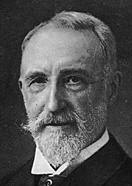 THEODORE
DUBOIS (1837-1924),
along with his almost exact contemporary
Camille Saint Saens, was one of the leading composers of the French
Romantic Movement. Dubois and Saint Saens both eschewed
Impressionism. It is surprising and inexpicable that his music is
not as well known as that of Saint Saens for it is every bit as
good. Fame is a fickle thing. His
TWO PIECES IN CANONICAL STYLE FOR OBOE, CELLO
AND PIANO are charming and appealing. Though written
for two virtuoso players who, like him, taught at the Paris
Conservatory, it is a work which is very easy to play and presents
absolutely no technical difficulties. A good choice for concert but
certainly a work which amateur should not pass up. THEODORE
DUBOIS (1837-1924),
along with his almost exact contemporary
Camille Saint Saens, was one of the leading composers of the French
Romantic Movement. Dubois and Saint Saens both eschewed
Impressionism. It is surprising and inexpicable that his music is
not as well known as that of Saint Saens for it is every bit as
good. Fame is a fickle thing. His
TWO PIECES IN CANONICAL STYLE FOR OBOE, CELLO
AND PIANO are charming and appealing. Though written
for two virtuoso players who, like him, taught at the Paris
Conservatory, it is a work which is very easy to play and presents
absolutely no technical difficulties. A good choice for concert but
certainly a work which amateur should not pass up. |
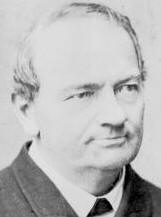 IGNAZ
LACHNER (1805-1895), the second
of the three famous Lachner brothers, was without doubt the one who had
the greatest gift for melody. That he might almost be called a second
Schubert was no accident for Lachner, during his time in Vienna, became
close friends with Schubert. His
STRING QUARTET NO.3 IN C MAJOR is a stellar example
of his melodic gifts. However, Lachner was not just a melodist, but also an expert in composition as the fine part-writing in
this quartet shows. Along with his other quartets, it enjoyed great popularity throughout the 19th
century. If brought into the concert hall, audiences will regard it as a
great treat. Amateurs also will get much pleasure from it. IGNAZ
LACHNER (1805-1895), the second
of the three famous Lachner brothers, was without doubt the one who had
the greatest gift for melody. That he might almost be called a second
Schubert was no accident for Lachner, during his time in Vienna, became
close friends with Schubert. His
STRING QUARTET NO.3 IN C MAJOR is a stellar example
of his melodic gifts. However, Lachner was not just a melodist, but also an expert in composition as the fine part-writing in
this quartet shows. Along with his other quartets, it enjoyed great popularity throughout the 19th
century. If brought into the concert hall, audiences will regard it as a
great treat. Amateurs also will get much pleasure from it. |
|
|
That the Italian composer VINCENZO DE MEGLIO (1825-1883) is not better known in part must be due to the fact that he lived his entire life in Naples, rarely traveling anywhere, not even to the larger Italian cities like Rome or Milan. But within Naples and envirions, he and his music enjoyed a considerable reputation. He was not only a composer but also as a popular and sought after concert and salon pianist. His ANDANTE AND ALLEGRO FOR PIANO TRIO, a work which sounds like it was written for the tastes of salon audiences is a perfect example of his talent. The part-writing balances all 3 voices masterfully. The melodies are highly appealing and while it certainly will do well in concert, it can be tackled by amateurs as well. |
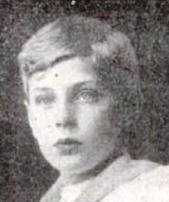 GEORGE
SZELL
(1897-1970) is known by most music lovers as one of the most
famous conductors of the 20th century. However, Szell was a child
prodigy of the first order, not only as a pianist, but also as a
composer. At the age of 14, he composed his
PIANO
QUINTET IN E MAJOR, a work which sounds like it was
written by a mature composer decades older than a mere child. So
impressed was the famous Vienna publishing firm Universal Editions,
that they gave the 14 year old boy a ten year contract for the exclusive
rights to publish his works. It would be no exaggeration to say that
this is a work of the first order, a masterwork deserving concert
performance. GEORGE
SZELL
(1897-1970) is known by most music lovers as one of the most
famous conductors of the 20th century. However, Szell was a child
prodigy of the first order, not only as a pianist, but also as a
composer. At the age of 14, he composed his
PIANO
QUINTET IN E MAJOR, a work which sounds like it was
written by a mature composer decades older than a mere child. So
impressed was the famous Vienna publishing firm Universal Editions,
that they gave the 14 year old boy a ten year contract for the exclusive
rights to publish his works. It would be no exaggeration to say that
this is a work of the first order, a masterwork deserving concert
performance. |
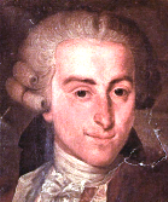 GIOVANNI
BATTISTA SAMMARTINI (1700-1775) was one of the most important
composers of the late Baroque and pre classical era. Multi-talented he
was a fine performer on the violin and the organ. He was also recognized
as a first rate composer and was a much sought after teacher who counted
Gluck and Myslivecek among his many students.
A compositional innovator, scholars believe that Haydn among others
learned from his advances. His
TRIO FOR TWO VIOLINS AND CELLO is from his earlier
period when he wrote in the Baroque style. It is an appealing work which
can be brought to to the concert hall but should also be considered by
amateurs who are sure to enjoy it as present no technical difficulties. GIOVANNI
BATTISTA SAMMARTINI (1700-1775) was one of the most important
composers of the late Baroque and pre classical era. Multi-talented he
was a fine performer on the violin and the organ. He was also recognized
as a first rate composer and was a much sought after teacher who counted
Gluck and Myslivecek among his many students.
A compositional innovator, scholars believe that Haydn among others
learned from his advances. His
TRIO FOR TWO VIOLINS AND CELLO is from his earlier
period when he wrote in the Baroque style. It is an appealing work which
can be brought to to the concert hall but should also be considered by
amateurs who are sure to enjoy it as present no technical difficulties. |
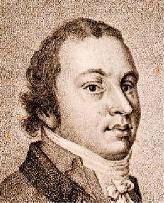 Today,
most scholars regard PETER HÄNSEL (1770-1831) as the principal
representative of the true quartet style of Haydn and Mozart. Hänsel not
only studied with Haydn, he absorbed more of the master's technique than
anyone else. No one's quartets sound more like they were written by
Haydn than Hänsel. They are so well
done that if you did not know otherwise, you would certainly believe
they had been written by Haydn. As such they are perfect in every way. His
STRING QUARTET IN A MAJOR is a superb example of how
well he succeeded. This is a first rate quartet, the equal of the very
best of Haydn's certainly deserving concert performance and recommended
to amateurs also. Today,
most scholars regard PETER HÄNSEL (1770-1831) as the principal
representative of the true quartet style of Haydn and Mozart. Hänsel not
only studied with Haydn, he absorbed more of the master's technique than
anyone else. No one's quartets sound more like they were written by
Haydn than Hänsel. They are so well
done that if you did not know otherwise, you would certainly believe
they had been written by Haydn. As such they are perfect in every way. His
STRING QUARTET IN A MAJOR is a superb example of how
well he succeeded. This is a first rate quartet, the equal of the very
best of Haydn's certainly deserving concert performance and recommended
to amateurs also. |
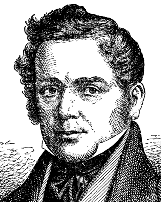 CARL
CZERNY
(1791-1857), a student of Beethoven, Clementi and Hummel was a
child prodigy on the piano as well as one of the most famous piano
teachers of all time. He was also a prodigious composer of over 1000
works.
His publishers insisted he write salon pieces which were incredibly
popular and made them rich. Critics who were unfamiliar with his
wonderful chamber music, attacked him as a hack. Had they ever heard
works such as his
NONET FOR PIANO,
STRINGS & WINDS IN E FLAT MAJOR they would have
realized that he not only had a gift for melody but also was an
immaculate craftsman as a composer. This is a superb work deserving
concert performance. CARL
CZERNY
(1791-1857), a student of Beethoven, Clementi and Hummel was a
child prodigy on the piano as well as one of the most famous piano
teachers of all time. He was also a prodigious composer of over 1000
works.
His publishers insisted he write salon pieces which were incredibly
popular and made them rich. Critics who were unfamiliar with his
wonderful chamber music, attacked him as a hack. Had they ever heard
works such as his
NONET FOR PIANO,
STRINGS & WINDS IN E FLAT MAJOR they would have
realized that he not only had a gift for melody but also was an
immaculate craftsman as a composer. This is a superb work deserving
concert performance. |